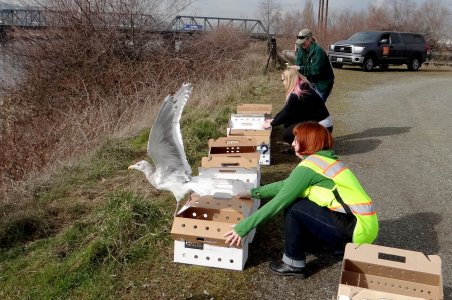
I convinced myself that we were never going to know what happened, and I had to be OK with that. Sometimes knowing what it isn’t is as significant as knowing what it is. It’s not nearly as satisfying, but it can be just as important.
That being said, we know what it is. It is botulism. More specifically, avian botulism. Avian botulism is a paralytic, often fatal, disease of birds that results when they ingest a toxin produced by the bacterium, Clostridium boluinum. It is the same bacteria your mother warned you about when you were going to eat food out of that dented can, and the bacterial spores are common throughout the natural world. The fascinating part (for nerds like me) is that a very specific series of events have to occur in order for the spores to become toxic. I won’t bore you with the details, but you can learn more about it.
Nature has a way of not “obeying the rules” which made us question whether botulism could be the culprit. It isn’t the “right” time of year for an avian botulism outbreak, the symptoms weren’t quite consistent, and oftentimes more than one species of bird is affected. Thankfully, the scientists at the Washington Department of Fish and Wildlife requested the samples be tested for botulism anyway, as unlikely as it seemed to be at the time.
The needle in the haystack of possibilities has been found. We have our answer, although we will likely never know the source. We are lucky. Turns out, avian botulism is considered to be one of the most important diseases of migratory birds. Deaths from avian botulism can vary from a few hundred to more than 50,000 in a single outbreak. The outbreak in Tacoma was limited to a few dozen and appears to be an isolated event. PAWS Wildlife Rehabilitation Center, WDFW and the Port were able to release 16 rehabilitated gulls back to the wild at Gog-le-hi-te Wetland on Valentine’s Day. That was a good day.
This is an important reminder, though, that we are all responsible for our environment. Keep pesticides, poisons or other household hazardous materials away from any potential contact with resident wildlife. Make sure garbage cans and yard waste bins are closed tight. Scavengers, such as gulls, can be quite creative when trying to find their dinner, and they aren’t picky eaters.
Fun side note: I have been hearing coworkers correct each other on “gull” versus “seagull”. Success!
